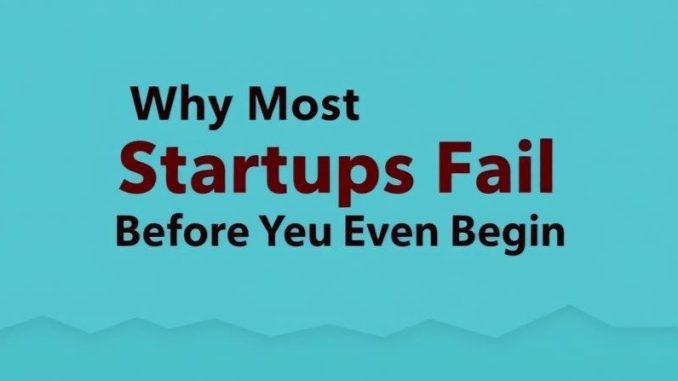
Startups are built on ambition. They begin with bold ideas, passionate founders, and the drive to disrupt industries or solve pressing problems. But despite all the energy and optimism, many startups fail—not because their ideas are bad, but because they miss the real problem. They focus on symptoms instead of root causes, chase trends instead of truths, and build solutions for imagined needs rather than actual ones. The result is a product that might be clever, even beautiful, but ultimately irrelevant. Understanding why this happens is key to building ventures that truly matter.
One of the most common missteps is falling in love with the solution before fully understanding the problem. Founders often come from technical backgrounds or have a specific vision they’re eager to realize. They start building immediately, driven by the excitement of creation. But without spending enough time in the problem space—talking to users, observing behavior, and challenging assumptions—they risk solving the wrong thing. A startup might develop a sophisticated scheduling app, only to discover that their target users don’t struggle with scheduling—they struggle with coordination across teams. The distinction is subtle but critical. Solving the wrong problem with the right technology still leads to failure.
Another reason startups miss the real problem is the allure of surface-level validation. Early feedback can be misleading. Friends, mentors, and even potential customers may offer polite encouragement or vague interest, especially when the idea sounds promising. But interest is not the same as pain. Real problems create urgency. They drive behavior. If users aren’t actively seeking a solution or willing to pay for one, the problem may not be as pressing as it seems. Startups that rely too heavily on positive signals without digging deeper into user behavior often build products that are nice to have, not need to have.
Market research can also be deceptive. Data is valuable, but it’s only as good as the questions asked and the context understood. Surveys and interviews can confirm biases rather than challenge them. Startups sometimes use research to justify their ideas rather than refine them. They look for confirmation instead of contradiction. But the most useful insights often come from unexpected places—from the outliers, the skeptics, the people who say, “This doesn’t work for me.” These voices reveal the gaps, the friction, and the unmet needs that point to the real problem. Ignoring them means missing the opportunity to build something truly impactful.
Speed is another factor. The startup world celebrates velocity—launch fast, iterate quickly, scale aggressively. While speed has its advantages, it can also lead to shallow thinking. When teams are pressured to move fast, they may skip the uncomfortable work of questioning their assumptions. They may prioritize features over understanding, growth over depth. But real problems are often messy. They require patience, empathy, and a willingness to sit with complexity. Startups that slow down enough to explore the full landscape of a problem are more likely to build solutions that endure.
Founders’ personal experiences can both illuminate and obscure. Many startups are born from a founder’s frustration or insight, which can be a powerful starting point. But personal experience is not universal. What feels like a problem to one person may not resonate with others. Startups that extrapolate too quickly from individual pain points risk building for themselves rather than the market. The challenge is to balance personal insight with broad validation. It’s about asking, “Who else feels this?” and “How does this problem show up in different contexts?” That kind of inquiry leads to richer understanding and more inclusive design.
The pressure to pitch also distorts problem framing. Investors want clarity, traction, and a compelling story. Founders learn to package their ideas in ways that sound impressive and scalable. But in doing so, they may oversimplify the problem or gloss over its nuances. They may present a polished narrative that hides the uncertainty and complexity they’re still grappling with. This can lead to premature commitment—locking into a solution before the problem is fully understood. The irony is that the best pitches often come from startups that have done the messy work of exploring the problem deeply. They speak with confidence not because they have all the answers, but because they’ve asked the right questions.
Missing the real problem isn’t just a tactical error—it’s a strategic one. It affects everything from product design to marketing to customer retention. When startups solve the wrong problem, they struggle to find product-market fit. They burn through resources trying to force adoption. They pivot endlessly, hoping that a new feature or a different audience will unlock growth. But without a clear understanding of the problem, these efforts are scattershot. They lack coherence and conviction. Startups that get the problem right, on the other hand, build with purpose. They attract users who feel understood, investors who see potential, and teams who are motivated by meaning.
The good news is that missing the real problem is avoidable. It requires humility, curiosity, and discipline. It means spending time with users, asking uncomfortable questions, and being willing to change course. It means treating the problem space as sacred—not something to rush through, but something to explore with care. When startups do this well, they don’t just build products—they build relevance. They create solutions that matter, not just to them, but to the people they serve. And that’s what turns a good idea into a great business.